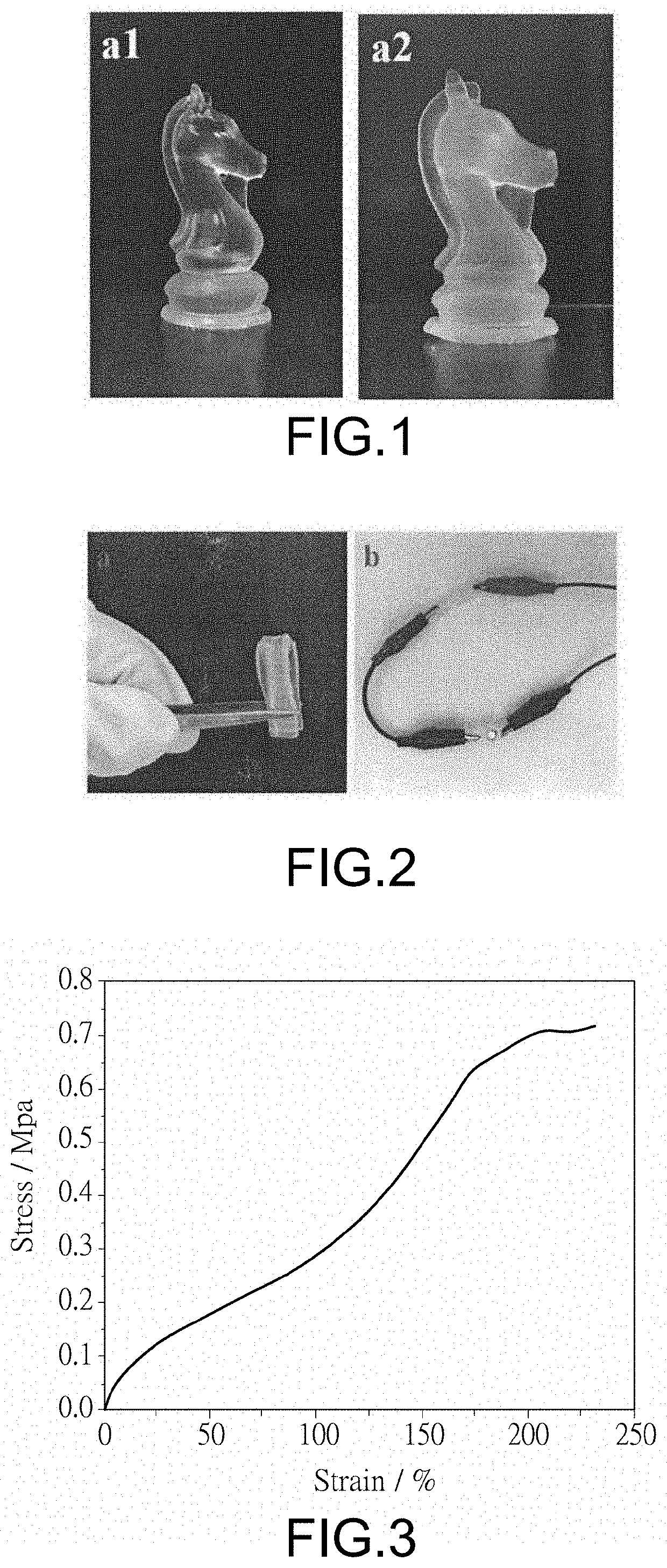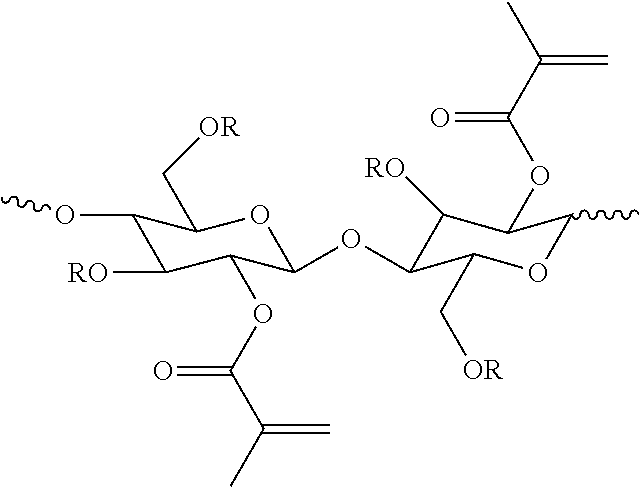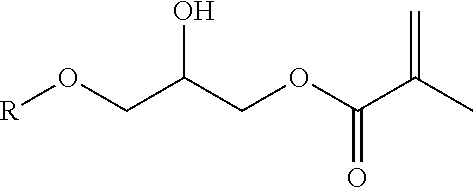Method for preparing biomass-based conductive hydrogel by 3D printing
- Summary
- Abstract
- Description
- Claims
- Application Information
AI Technical Summary
Benefits of technology
Problems solved by technology
Method used
Image
Examples
example 1
[0027] preparation of a biomass-based conductive hydrogel in a ratio of [an ethyl cellulose-based macromonomer]: [a rosin-based monomer]: [an acrylic acid monomer]: [an initiator]=0.3:2:8:0.2.
[0028]Step 1: First, 0.9 g of ethyl cellulose-based macromonomer with a viscosity of 3-7 mPa·s, 6 g of disproportionated rosin-based monomer, 24 g of hydroxyethyl acrylate, and 0.6 g of (2,4,6-trimethylbenzoyl)diphenylphosphine oxide were mixed, and stirred and sufficiently dissolved at 70° C.; and then 1.5 g of hexamethylene diisocyanate was added to the mixed solution and mixed uniformly to prepare a 3D printing photosensitive resin solution.
[0029]Step 2: An SLA light-curing 3D printer was used to print a hydrogel precursor 1 with a complex shape, and then the hydrogel precursor 1 was heated at 110° C. for 8 hours to obtain a hydrogel precursor 2 with a dual-curing network.
[0030]Step 3: Finally, the obtained hydrogel precursor 2 was swelled in a 10 wt % sodium hydroxide solution at 40° C. for...
example 2
[0031] preparation of a biomass-based conductive hydrogel in a ratio of [an ethyl cellulose-based macromonomer]: [a rosin-based monomer]: [an acrylic acid monomer]: [an initiator]=0.3:2:8:0.2.
[0032]Step 1 was identical to that in Example 1.
[0033]Step 2: An SLA light-curing 3D printer was used to print a hydrogel precursor 1 with a complex shape, and then the hydrogel precursor 1 was heated at 80° C. for 5 hours to obtain a hydrogel precursor 2 with a dual-curing network.
[0034]Step 3: Finally, the obtained hydrogel precursor 2 was swelled in a 5 wt % potassium hydroxide solution at 20° C. for 4 hours to obtain the biomass-based conductive hydrogel.
example 3
[0035] preparation of a biomass-based conductive hydrogel in a ratio of [an ethyl cellulose-based macromonomer]: [a rosin-based monomer]: [an acrylic acid monomer]: [an initiator]=0.5:4:6:0.3.
[0036]Step 1: First, 1 g of ethyl cellulose-based macromonomer with a viscosity of 90-110 mPa·s, 8 g of dehydroabietic acid monomer, 12 g of hydroxyethyl acrylate, and 0.6 g of benzil dimethyl ketal were mixed, and stirred and sufficiently dissolved at 60° C.; and then 1.6 g of toluene diisocyanate was added to the mixed solution and mixed uniformly to prepare a 3D printing photosensitive resin solution.
[0037]Step 2 was identical to that in Example 1.
[0038]Step 3 was identical to that in Example 1.
[0039]Example 4: preparation of a biomass-based conductive hydrogel in a ratio of [an ethyl cellulose-based macromonomer]: [a rosin-based monomer]: [an acrylic acid monomer]: [an initiator]=0.5:4:6:0.3.
[0040]Step 1 was identical to that in Example 3.
[0041]Step 2: An SLA light-curing 3D printer was use...
PUM
| Property | Measurement | Unit |
|---|---|---|
| viscosity | aaaaa | aaaaa |
| viscosity | aaaaa | aaaaa |
| viscosity | aaaaa | aaaaa |
Abstract
Description
Claims
Application Information
 Login to View More
Login to View More - R&D
- Intellectual Property
- Life Sciences
- Materials
- Tech Scout
- Unparalleled Data Quality
- Higher Quality Content
- 60% Fewer Hallucinations
Browse by: Latest US Patents, China's latest patents, Technical Efficacy Thesaurus, Application Domain, Technology Topic, Popular Technical Reports.
© 2025 PatSnap. All rights reserved.Legal|Privacy policy|Modern Slavery Act Transparency Statement|Sitemap|About US| Contact US: help@patsnap.com



